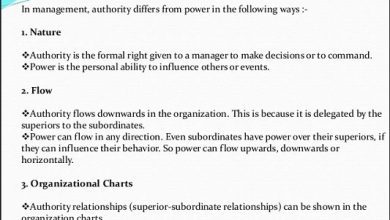Nuclear power examples Electricity production Pest control etc.
Nuclear energy can have several uses: heat, electricity, food preservation, finding new resources or used as a medical treatment.This energy is obtained from the reaction that takes place in the nucleus of atoms, the smallest units of matter of the chemical elements universe. In this article we will provide you the 10 examples of Nuclear power.
These atoms can have different shapes, called isotopes. There are stable and unstable depending on the changes they experience in the nucleus. It is the instability in the neutron content, or atomic mass, that makes them radioactive. It is the radioisotopes or unstable atoms that produce nuclear energy.
The radioactivity they emit can be used, for example, in the field of medicine with radiotherapy. One of the techniques used in the treatment of cancer, among other uses.
List of 10 examples of nuclear power
1- Electricity production
Nuclear energy is used to produce electricity in a more economical and sustainable way, as long as it is put to good use.
Electricity is a fundamental resource for today’s society, so the reduction of costs that occur with nuclear energy can favor the access of more people to electric means.
According to 2015 data from the International Atomic Energy Agency (IAEA), North America and South Asia lead the world in electricity production using nuclear energy. Both exceed 2000 terawatt hours (TWh).
2- Improve crops and increase world resources
The Food and Agriculture Organization of the United Nations (FAO) states in its 2015 report that there are “795 million undernourished people in the world”.
The good use of nuclear energy can contribute to this problem, generating more resources. In fact, FAO develops collaborative programs with the IAEA for this purpose.
According to the World Nuclear Association, atomic energy contributes to increasing food resources through fertilizers and genetic modifications in food.
The use of nuclear power allows for more efficient use of fertilizer, a very expensive substance. With some isotopes like nitrogen-15 or phosphorus-32, plants can take advantage of the maximum possible amount of fertilizer without wasting it in the environment.
On the other hand, transgenic foods allow for greater food production through the modification or exchange of genetic information. One of the ways to achieve these mutations is by ionic radiation.
However, there are many organizations that oppose these types of practices because of their harm to health and the environment. This is the case of Greenpeace, which defends organic agriculture.
3- Pest control
Nuclear energy allows the development of a sterilization technique for insects, which serves to prevent pests in crops.
It is the sterile insect technique (SIT). According to FAO news from 1998, it was the first pest control method that used genetics.
This method consists of raising insects of a specific species, normally harmful to crops, in a controlled space.
Males are sterilized using small molecular radiation and are released into the affected area to mate with females. The more sterile male insects bred in captivity, the fewer fertile wild insects.
In this way, they manage to avoid economic losses in the field of agriculture. These sterilization programs have been used by several countries. For example, Mexico, where according to the World Nuclear Association, it was a success.
4- Food preservation
Radiation pest control with nuclear energy allows for better preservation of food. Irradiation techniques prevent massive food waste, especially in countries with hot and humid climate.
In addition, atomic energy serves to sterilize the bacteria present in foods such as milk, meat or vegetables. It’s also a way to extend the life of perishable foods like strawberries or fish.
According to supporters of nuclear energy, this practice does not affect the nutrients of products or have harmful effects on health.
Most ecological organizations do not think the same, which continues to defend the traditional method of harvesting.
5- Increase in water resources
Nuclear reactors produce heat, which can be used to desalinate water. This aspect is especially useful for dry countries lacking fresh water resources.
This irradiation technique makes it possible to convert salty sea water into clean water suitable for drinking. In addition, according to the World Nuclear Association, hydrological techniques with isotopes allow for more precise monitoring of natural water resources.
The IAEA has developed collaboration programs with countries like Afghanistan, to seek new water resources in that country.
6- Use of nuclear energy in medicine
One of the beneficial uses of radioactivity by nuclear energy is the creation of new treatments and technologies in the field of medicine. It is what is known as nuclear medicine.
This branch of medicine allows professionals to make a faster and more accurate diagnosis of their patients, as well as treat them.
According to the World Nuclear Association, ten million patients worldwide are treated with nuclear medicine every year and more than 10,000 hospitals use radioactive isotopes in their treatments.
Atomic energy in medicine can be found in X-rays or in treatments as important as radiotherapy, widely used in cancer.
According to the National Cancer Institute, “radiation therapy (also called radiation therapy) is a cancer treatment that uses high doses of radiation to kill cancer cells and shrink tumors.”
This treatment has a downside; It can cause side effects in the cells of the body that are healthy, damaging them or producing changes, which usually recover after healing.
7- Industrial applications
The radioisotopes present in nuclear energy allow greater control of pollutants emitted into the environment.
On the other hand, atomic energy is very efficient, does not leave residues and is much cheaper than other industrially produced energies.
The instruments used in nuclear power plants generate a much greater benefit than they cost. In a few months, they allow you to save the money they cost you in the first place, before they pay off.
On the other hand, the measurements used to calibrate the amounts of radiation usually also contain radioactive substances, usually gamma rays. These instruments avoid direct contact with the source to be measured.
This method is especially useful when dealing with substances that can be extremely corrosive to humans.
8- It is less polluting than other types of energy
Nuclear power plants produce clean energy. According to the National Geographic Society, they can be built in rural or urban areas without causing a major environmental impact.
Although, as we have seen, in recent events like Fukushima, the lack of control or an accident can have catastrophic consequences for large hectares of territory and for the population for generations to come.
If compared to the energy produced by coal, it is true that it emits less gases into the atmosphere, avoiding the greenhouse effect.
9- Space missions
Nuclear energy has also been used for expeditions into outer space.
Nuclear fission or radioactive decay systems are used to generate heat or electricity through radioisotope thermoelectric generators that are usually used for space probes.
The chemical element from which nuclear energy is extracted in these cases is plutonium-238. There are several expeditions that have been made with these devices: the Cassini mission to Saturn, the Galileo mission to Jupiter and the New Horizons mission to Pluto.
The last space experiment carried out with this method was the launch of the Curiosity vehicle, within the investigations that are being developed around the planet Mars.
The latter is much larger than the former and is capable of producing more electricity than solar panels can produce, according to the World Nuclear Association.
10- Nuclear weapons
The war industry has always been one of the first to be updated in the field of new techniques and technologies. In the case of nuclear energy, it would be no less.
There are two types of nuclear weapons, those that use this source as a propulsion to produce heat, electricity in different devices or those that directly seek the explosion.
In this sense, we can distinguish between means of transport, such as military aircraft or the already known atomic bomb, which generates a sustained chain of nuclear reactions. The latter can be manufactured with different materials, such as uranium, plutonium, hydrogen or neutrons.
According to the IAEA, the United States was the first country to build a nuclear bomb, so it was one of the first to understand the benefits and dangers of this energy.
Since then, this country, as a major world power, has established a policy of peace in the use of nuclear energy.
A program of collaboration with other states that began with President Eisenhower’s speech in the 1950s before the United Nations organization and the International Atomic Energy Agency.
Negative effects of nuclear energy
Some of the dangers of using atomic energy are as follows:
1- The devastating consequences of nuclear accidents
One of the biggest risks of nuclear or atomic energy is the accident, which can occur in reactors at any time.
As already demonstrated in Chernobyl or Fukushima, these catastrophes have devastating effects on life, with high contamination of radioactive substances in plants, animals and in the air.
Excessive exposure to radiation can cause diseases such as cancer, irreparable malformations and harm to future generations.
2- Harmful effects of transgenic foods
Ecological organizations such as Greenpeace criticize the method of agriculture advocated by promoters of nuclear energy.
Among other qualifiers, they state that this method is very destructive due to the large amount of water and oil it consumes.
It also has economic effects, such as the fact that these techniques can only afford and have access to a few, ruining small farmers.
3- Limitation of uranium production
Like oil and other energy sources used by humans, uranium, one of the most common nuclear elements is finite. In other words, it could end at any time.
This is why many advocate the use of renewable energy over nuclear energy.
4- Requires large installations
Nuclear energy production can be cheaper than other types of energy, but the cost of building power plants and reactors is high.
In addition, you must be very careful with these types of constructions and the personnel who will work on them, as you must be highly qualified to avoid possible accidents.
The biggest nuclear accidents in history
Atomic bomb
Throughout history, there have been countless atomic bombs. The first took place in 1945 in New Mexico, but the two most important, without a doubt, were those that exploded in Hiroshima and Nagasaki during World War II. Their names were Little Man and Fat Boy respectively.
Chernobyl accident
It took place at the nuclear power plant in the city of Pripyat, Ukraine, on April 26, 1986. It is considered one of the most serious environmental catastrophes next to the Fukushima accident.
In addition to the deaths it produced, almost all the workers in the factory, there were thousands of people who had to be evacuated and were never able to return to their homes.
Today, the city of Prypiat is still a ghost town, which has been the object of looting, and has become a tourist attraction for the curious.
Fukushima accident
It was March 11, 2011. It is the second most serious nuclear accident after Chernobyl.
It occurred as a result of a tsunami in eastern Japan that exploded the buildings where the nuclear reactors were, releasing a large amount of radiation to the outside.
Thousands of people had to be evacuated, while the city suffered serious economic losses.




